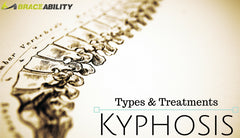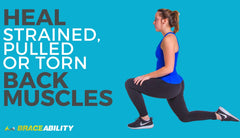Intervertebral Disc Disease (IVDD) in Dogs: What to Expect
If your dog has slipped a disc, you likely have a ton of questions about treatment options, costs, recovery odds, and more. In this post, we lay out some of your options (and their pros and cons), with perspective from a friend of mine with firsthand experience. Dog back pain can be a gut-wrenching experience for you and your fur baby, and unfortunately, intervertebral disc disease (IVDD) is a pretty common problem with dogs. This disease affects the cushioning discs located between the vertebrae (bones) of your dog’s spine.
How Do These Back Problems Happen in Dogs?
Just like with people, a dog’s discs degenerate over time and eventually, the disc can herniate or rupture, resulting in the inner disc material protruding into the spinal canal. Or the disc itself may bulge out of its normal position. Check out this post that uses a jelly donut to show just what’s happening with your dog’s spinal disc.
Sometimes this occurs gradually, with osteoarthritis being a contributing factor. And other times trauma, like a leap onto a couch, is what causes your dog’s disc(s) to rupture. And sometimes it’s a combination scenario. My friend Nicole’s adorable Dachshund, Bogey, had been having troubles with his back for a few months before a wrong turn of his neck caused a disc to slip. Bogey’s injury left him unstable and uncomfortable at first, but within a matter of days, he was unable to move any of his limbs or control his bladder.
In addition to the inner “jelly” that may protrude into the spinal canal, your dog will also experience inflammation that can compress the spinal cord and/or pinch nerve endings, causing pain and possibly neurological problems, such as those Bogey experienced.
Signs Your Dog Slipped a Disc
Depending upon the severity of your dog’s injury, you might notice signs like your dog:
- Has a wobbly hind end
- Struggles walking with the back legs
- Is not moving as freely as normal
- Is sensitive to pressure on the back
- Has an arched back
- Experiences muscle spasms
- Is paralyzed
- Signals back or neck pain/stiffness
- Is unable to urinate normally

Some small breeds of dogs like Shih-Tzus, Beagles, Pekingese, Poodles, Corgis, Bassett Hounds, and Dachshunds are prone to such injuries. Generally speaking, larger breeds of dogs have less trouble with slipped discs than little ones, but there are some bigger dogs like German Shepherds, Labrador Retrievers and Doberman Pinschers that are more prone to this disc disease as well. As is the case with people, obesity also dramatically increases your dog’s risk of IVDD. If your dog slips a disc, you will have to make a lot of treatment decisions in short order. Waiting can lead to further damage, such as a collapsed disc, and of course getting your hurt pooch pain-free and healthy is your top priority. We try to make this decision process a bit easier for you by laying out some of the options available for treating a herniated disc in dogs, breaking down their pros and cons and letting you know what you can expect on the road to recovery.
Conservative or Surgical Treatment for a Slipped Disc in Dogs?
Advances in medicine mean that there are many options for treating and managing back pain in dogs, including acupuncture, sports rehabilitation, laser treatment, dog back braces and more. But the go-to methods remain either crate rest or surgery to fix the degenerative disc disease that’s causing problems with your dog’s spine. Choosing the “best” option requires some cost/benefit analysis.
Crate Rest for Treating a Herniated Disc in Dogs: Pros and Cons
Crate rest has the obvious advantages of not cutting open your dog and exposing your fur baby to all the risks surgery entails, including the chance (albeit low) of infection or further damage. Surgery is a major stressor on the body for canines and humans alike. Some dogs are not medically fit to go under the knife. Your vet should be able to advise you whether surgery is a viable option for your canine. Conservative treatment can also save you thousands of dollars when compared to surgery. Indeed, surgery is not a financial option for many, especially when you consider that some dogs sustain multiple herniated discs over the course of their life. On the other hand, keeping your dog bound to a kennel or crate for weeks on end won’t be easy for you or your pup. And there is the possibility that your dog’s spinal injury could progress and cause more serious, permanent damage if you forego surgery. Generally speaking, crate confinement is the better option for less severe episodes of a herniated or bulging disc or when financial or medical restrictions rule out surgery.
What Does Crate Rest Entail?
When it comes to crate rest, truly forcing your dog to rest (i.e., not giving into those sad puppy eyes) is key. Failure to do so can derail healing and lead to further degeneration of the spine, with even more serious consequences. This lengthy rest period gives your dog’s body a chance to calm sore, inflamed tissues and hopefully allows symptoms to subside and healing to occur. Your dog will need to calmly rest in a den/crate for around six to eight weeks. You will need to carry your dog to and from potty breaks and permit just minimal steps during them. Running, jumping or any other forceful movements are a huge no-no. We know—this is a tall order. Thankfully, there are many blogs and articles out there that can help you and your fur baby survive this period of confinement. Usually, crate rest is paired with the use of medications, which might include steroids, painkillers, muscle relaxers or some combination of them. But some warn against medication, saying pain is your dog’s alarm system that stops them from moving in harmful ways. Other home remedies for relieving your dog’s back pain include the use of heat or cold therapy. You might consider applying a heating/cooling gel pad or giving your pooch a warm bath.
BraceAbility does not sell any products for dogs, but the products below are great treatment options for your furry friend.
2 Noninvasive Treatments for Dogs with IVDD
Dog Support and Rehabilitation Harness
This dog harness offers support and pain relief for dogs who have trouble walking or experience pain with movement. It allows you to assist your dog when walking so you can continue your daily activities together. This harness can help dogs with IVDD, other back problems, and leg problems as well.

If your dog has IVDD, walking is probably a struggle. This pet stroller allows your dog to get out and about without worsening its condition. This is a great option to get your dog out of the house after being on crate rest all day.

Surgical Repair of Degenerative Disc Disease in Dogs: Pros and Cons
Surgery is generally the best option for treating spinal problems in dogs when symptoms rapidly progress to paralysis, your dog has no deep pain sensation, if your pup experiences continual setbacks, or when several weeks of medication and crate rest fail to restore neurological function and/or provide pain relief. This was the route Nicole chose to go with Bogey. Degenerative disc disease surgery can be quite expensive, ranging from around $2,000 to more than $8,000, with many procedures coming in around the $4,000 mark. Where you fall on that spectrum will depend on the extent of damage, where you are located and your vet, among other factors. Plus there will be related costs for an MRI to determine the extent of your dog’s injured back, follow-up care, and possibly a rehabilitation program to ensure a good recovery and get your pet back to normal. In many cases, surgery is the best option for truly “fixing” your dog’s herniated disc, but there is a chance that your vet will be unable to repair the problem or that the problem could worsen, especially if you are dealing with multiple problem areas. That said, the prognosis is usually pretty good for surgical treatment of degenerative disc disease in dogs. Surgery has more immediate results than weeks of crate rest, but this does not necessarily mean you get to bypass crate rest. Many veterinarians recommend your dog spend several weeks to a month, bound to a crate following surgery to limit the risk of a blood clot and to allow proper healing. If you opt to go the surgical route to repair a disc bulge and compressed nerves, know that spinal surgery for dogs is not an in-and-out procedure. You will likely need to leave your dog with the vet at least overnight and possibly for several days. For Nicole, the worst part of the treatment was that she had to leave him at a vet hospital located well over an hour away for two weeks. She said that near-daily visits and knowing he was in good hands helped get her through the experience.
Dog Herniated Disc Surgery Recovery: What to Expect
Like a human coming off back surgery, your dog will likely be groggy, unsteady and sore in the initial 24 hours following surgery. It may be tough, but you’ll need to leave your canine at the vet overnight and possibly for a few days or even weeks after surgery. When you do get home, you may need to administer medications to ease any discomfort and your dog may need to spend a few weeks in a crate. Limiting your dog’s motion gives the surgically repaired ruptured disc time to heal and inflammation that may be to blame for pinched nerves a chance to subside. This also reduces the risk of a blood clot. Besides bathroom breaks, your fur baby will also enjoy physiotherapy exercises that can help get him back to normal more quickly. Rather than leave Bogey at the hospital for therapy, Nicole opted to take him in and do exercises and stretches with him five times a day.
How Soon Will I See Improvement after Surgery?
In some cases, the results are fairly immediate, with your previously paralyzed dog able to walk out of the vet’s office with the function of the legs restored. But in other cases, progress is more gradual, spanning weeks and in some cases even months. “I would say Bogey has made about a 90% to 95% recovery,” Nicole reports, adding that he still has trouble with his balance from time to time and difficulty holding his leg up when urinating.” One of the most surprising things about the whole experience for her was how long it took for bladder function to fully return. “He wasn’t able to go on his own for about 1.5 months,” she explains. In some cases, surgery fails to fix a dog’s spine problems and your dog’s nerve damage may be permanent. At that point, you’ll have to evaluate your dog’s quality of life. Some dogs, especially smaller breeds, can still enjoy a very good quality of life. Wheelie carts and dog back braces can even keep your dog mobile in the wake of a spinal injury that leaves the lower back paralyzed. But if your dog is suffering, you may need to consider putting him down.
How Do I Stop My Dog from Slipping Another Disc?
After what can be a gut-wrenching experience, the last thing you want to do is to go through it again. While treating your pup like he’s made of glass is not necessary, there are some things you can do to prevent another spinal injury. “I think it's important (for Dachshunds especially) to not let them jump up and down or off of anything, even if you think it's not that big of a distance to the floor,” Nicole recommends. She also says it’s important to make sure you are holding your dog correctly.




